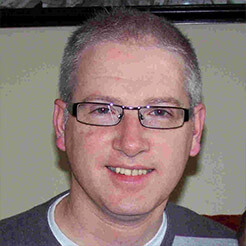
The National Decontamination Tracking System in use in St. James’s Hospital, has provided traceability for surgical procedures and meant that it was now possible to know which surgical instrument sets had been used in any operating theatre, Andrew Smith, HSSU Manager, St. James’s told the meeting.
He said contamination scares were always deeply worrying for patients and their families. In July 2013, because of lack of a robust electronic tracking system, eighteen patients in Our Lady’s Hospital, Crumlin, were misidentified as being at the centre of a contamination scare over a medical scope.
In the same month, the HSE contacted up to 20 patients who were operated on using instruments which had been used on a patient who had been subsequently diagnosed at Beaumont Hospital with CJD disease.
Because Beaumont had implemented and were using the national track and trace system they were able to identify 20 patients potentially at risk.
Mr. Smith said it was clinically imperative to have traceability for high risk procedures.
In 2007, the HSE recommended track and trace to be put in place to process Reusable Invasive Medical Devices (RIMDs) in Central Decontamination Units (CDUs). St. James’s Hospital was the first hospital to go live in 2011. Ninety per cent of hospitals in Ireland were now using this system.
“We now know what instrument is being used by which surgeon at which stage of the procedure.. We have 1,700 sets of instruments at St. James’s. But there are core number of high value sets in high demand and we only have a small number of these, so we need to get them back quickly. We used to be trying to find instruments visually in the washer/disinfectors by looking through the glass. Now with our electronic system, sets are being scanned and we know what has been scanned into which washer/disinfector and when the process will finish all via the click of a mouse on a PC.
Between 20011 and 2018, the number of instrument sets processed within the HSSU at St James’s Hospital increased from 23,000 to over 40,000.
“We used to have paper based instrument set checklists and people had to go to a filing cabinet to find the one they needed and then go and check it off. Now every set has a GS1 standard globally unique barcode which you scan in and the set list is automatically printed. There is no need to search in a cabinet and no confusion on the document version.
“We can track in theatres against patients bar codes, we can see all instruments used on a patient in that day , we can run lots of different reports.”
Mr. Smith said that loan sets brought into hospital were a major challenge for traceability. They could come from a commercial loan set or from another hospital and often were not barcoded.
“We used to decontaminate them and send them back to the company. These loan sets might not have bar codes, so it was back to the check list and manual labels which meant a two tier level of quality assurance for the patient. The loan sets are now scanned through each stage of the decontamination process. There is no need to re-key the information which is a great time saving and we have a full audit trail.
We have also started adding GS1 barcoded “Keydots” to supplementary instruments so that individual instruments can be scanned and tracked to each patient too.
Between 20011 and 2018, the number of instrument sets processed within the HSSU at St James’s Hospital increased from 23,000 to over 40,000.
The key benefits of the national traceability solution for instrument trays and endoscopes were automatic tracking of instrument sets, it was much easier to share loan sets, the tray checklists were printed when scanned, all records were stored digitally, there was a link between the tracking system and theatre to patients on whom they were used, there was improved workflow and reporting and management of the inventory of sets.
The next steps were adding keydot barcode to all supplementary instruments, adding additional areas such as the Cath Lab and OPD which used sterile surgical sets and requesting all loan set providers to be compliant with this GS1 standard of barcoding.

